Abstract
Despite current mammography recommendations, screening rates among African-American women are suboptimal. The purpose of this case-control study was to identify the psychological, demographic, and health care system barriers to screening mammography use among low-income African-American women. A total of 574 women with screening mammogram appointments at an urban hospital were interviewed to determine the predictors of mammogram appointment noncompliance. Predictor variables included: demographics; breast cancer knowledge, attitudes, beliefs, and screening practices; and type of health care provider making the referral. Age was inversely related to mammogram appointment noncompliance. Relative to women 40 to 49 years old, women 70 years of age and older were the least likely to miss their appointments (odds ratio [OR], 0.3; 95% confidence interval [CI], 0.2, 0.5). Women referred for mammography by a physician's assistant or nurse practitioner were less likely to miss their appointments than women referred by a physician (OR, 0.3; 95% CI, 0.1, 0.8). Embarrassment, lack of breast symptoms, and forgetfulness also contributed to noncompliance. Key demographic, attitudinal, and health care system factors hinder low-income African-American women from obtaining screening mammograms. These findings have significant health education and policy implications for health care delivery to women in this population.
Full text
PDF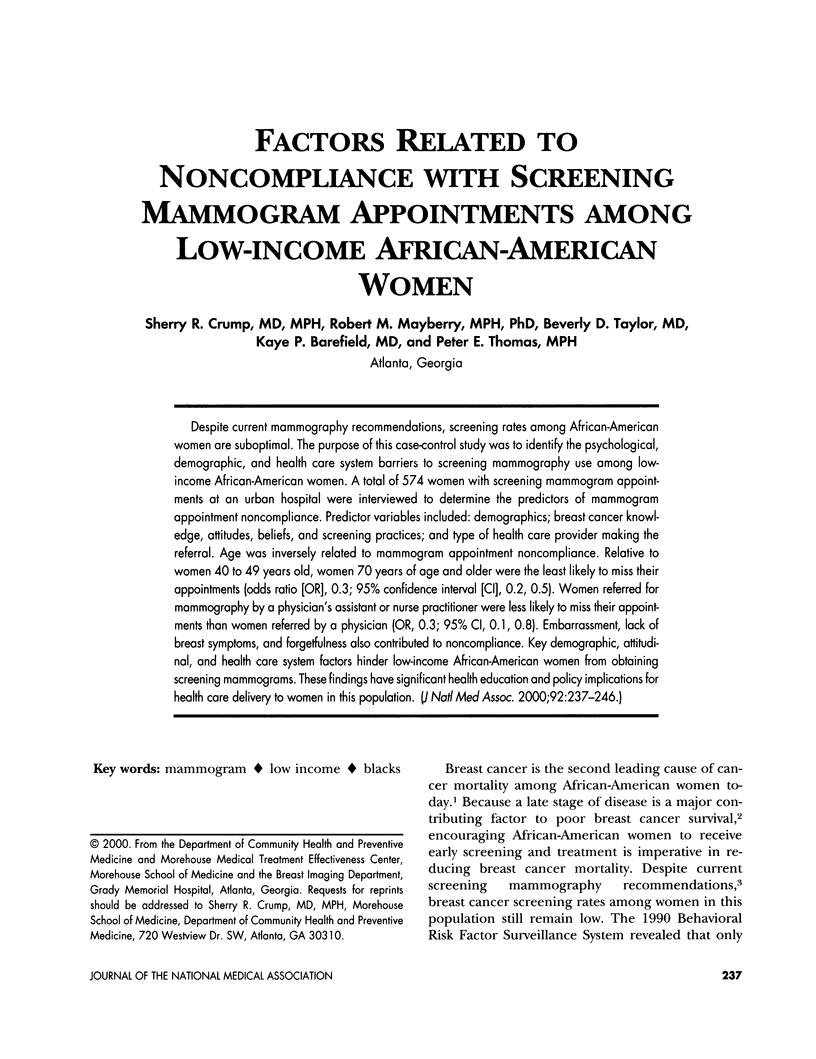
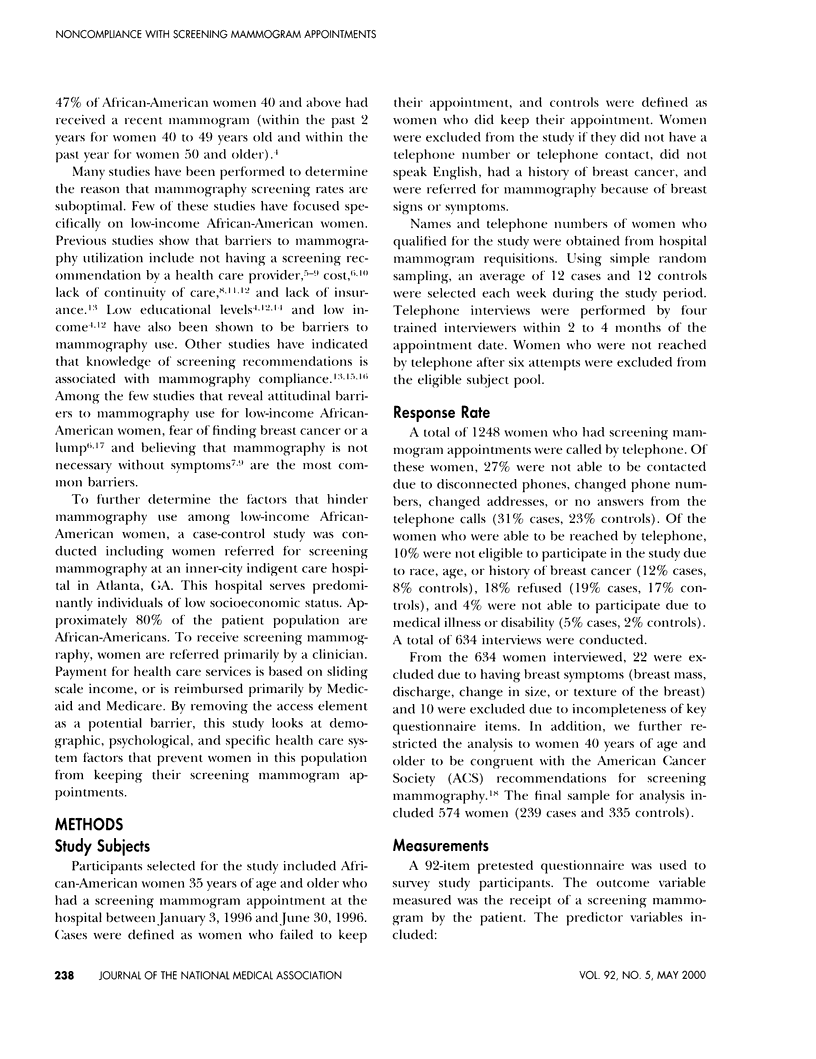

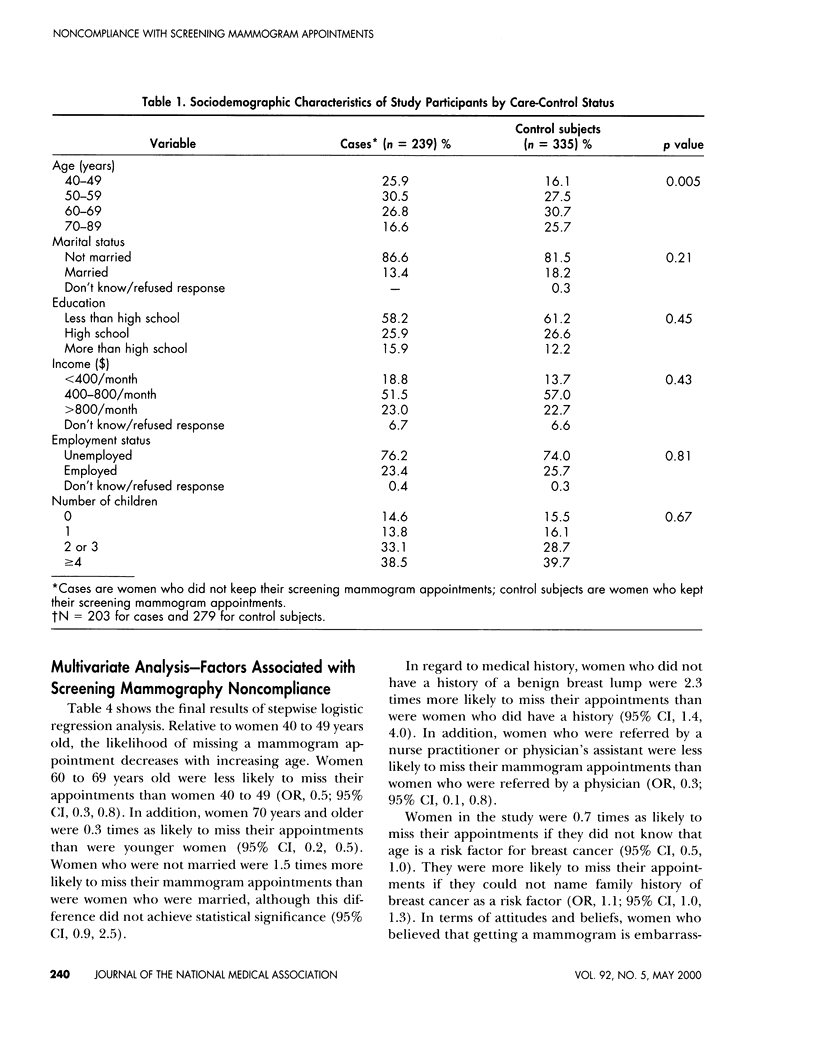
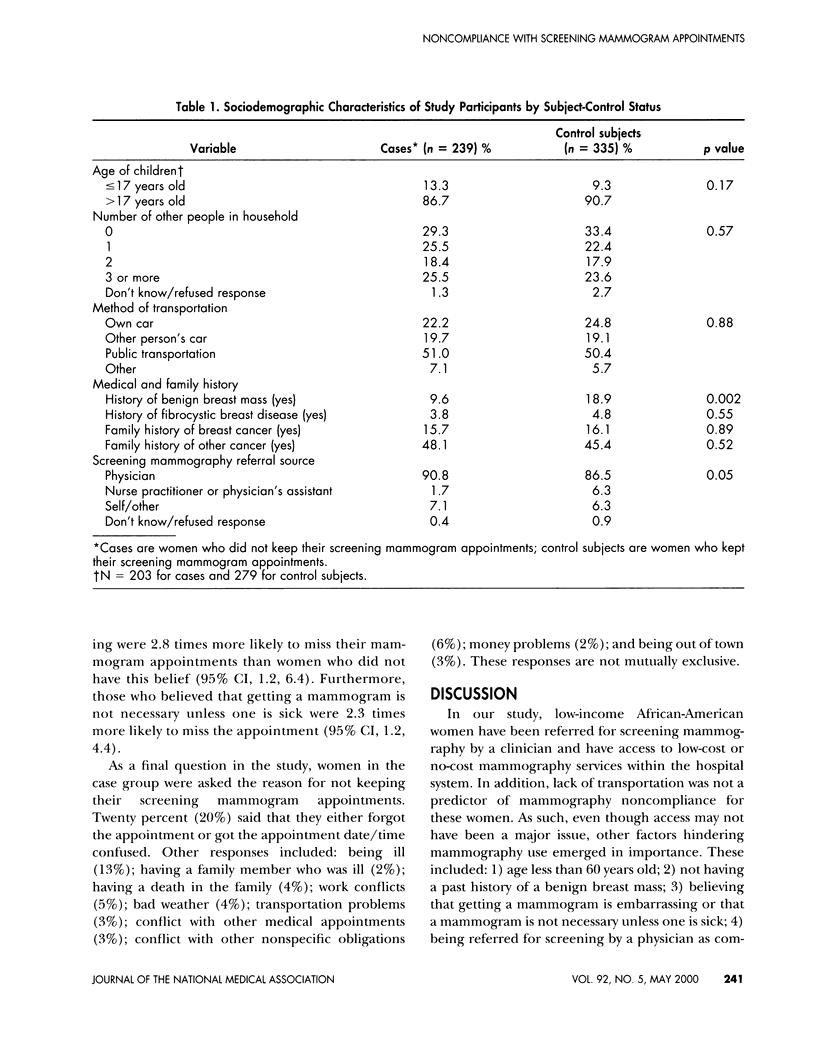
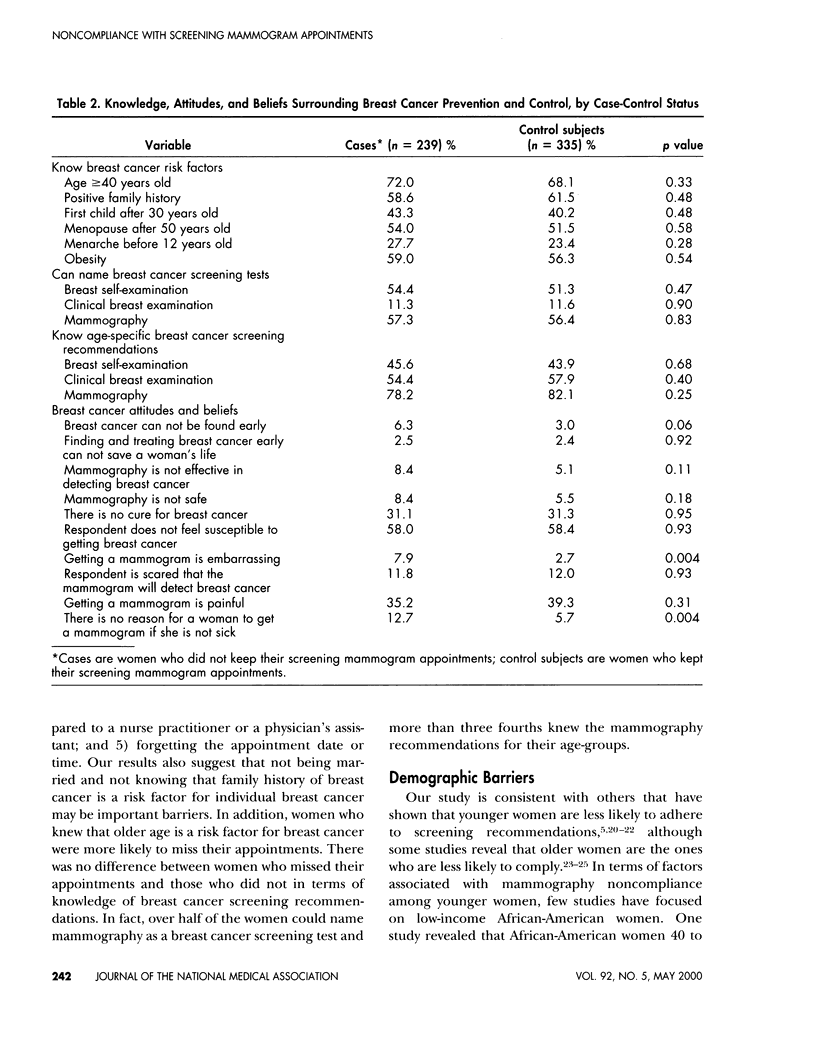
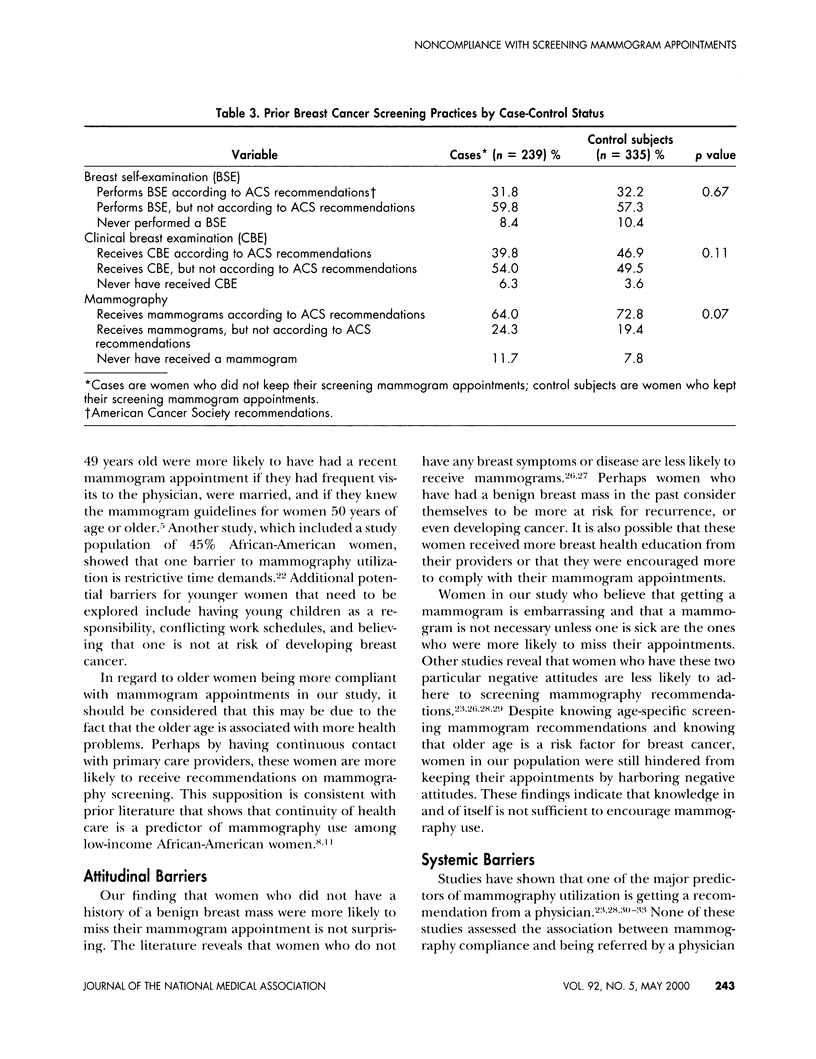
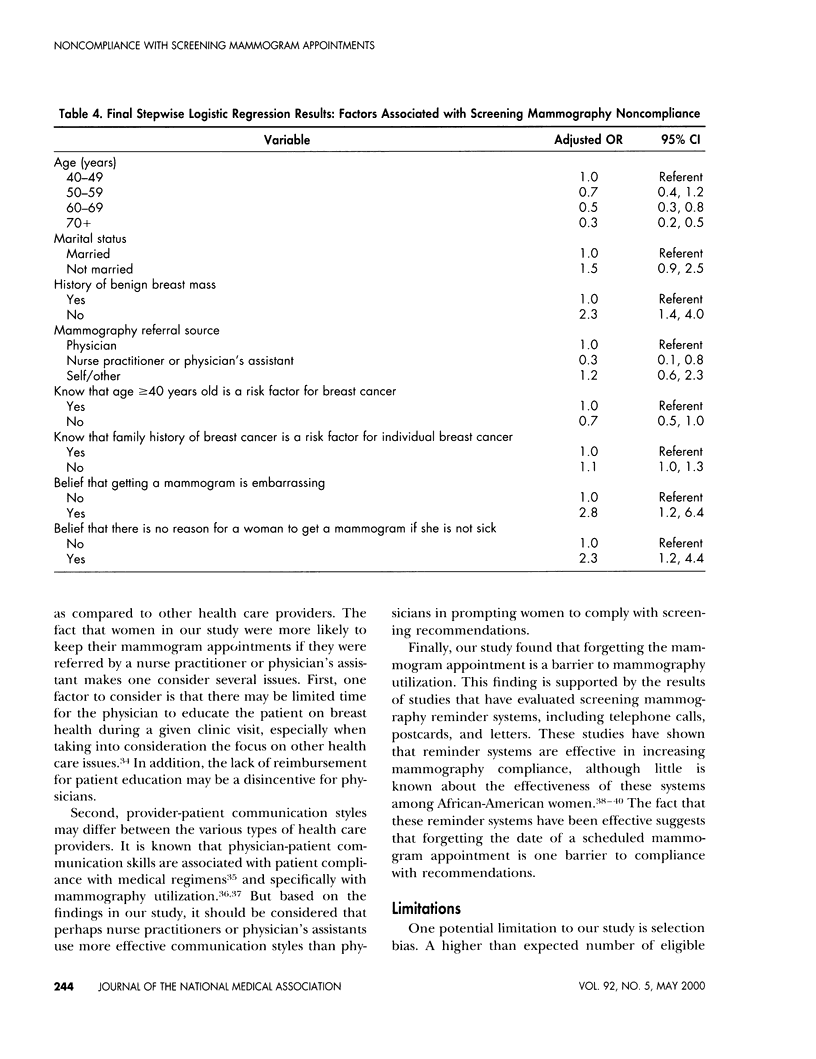
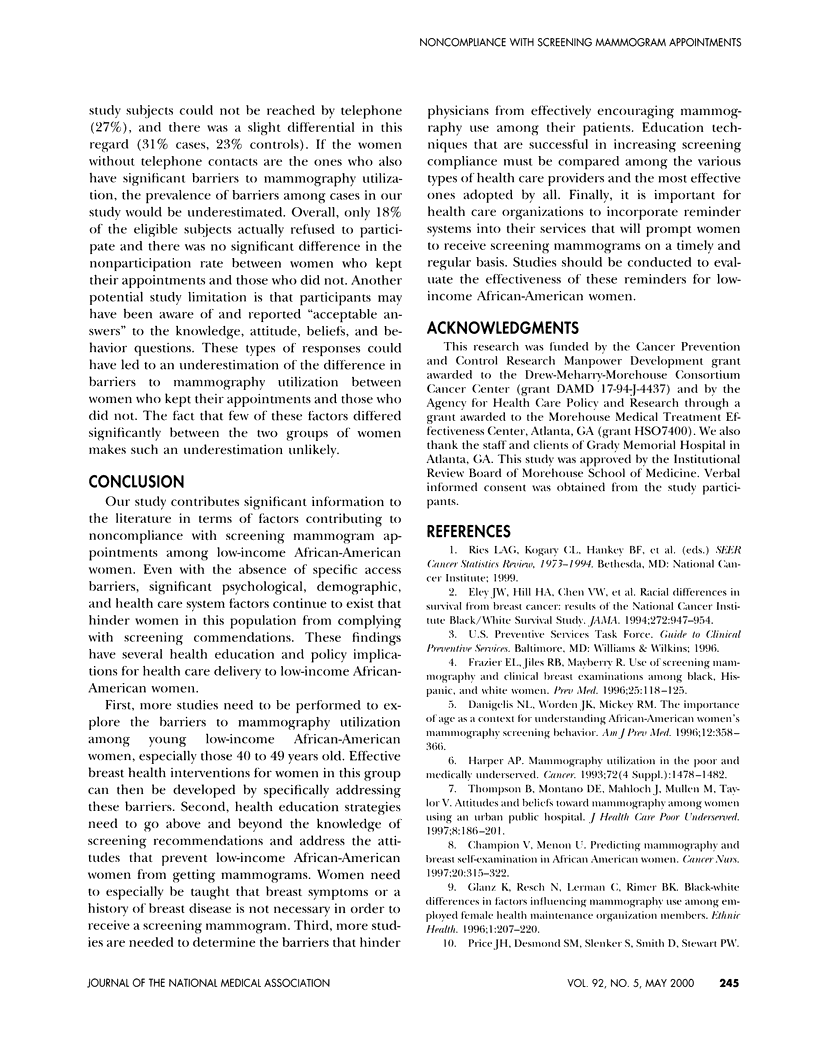
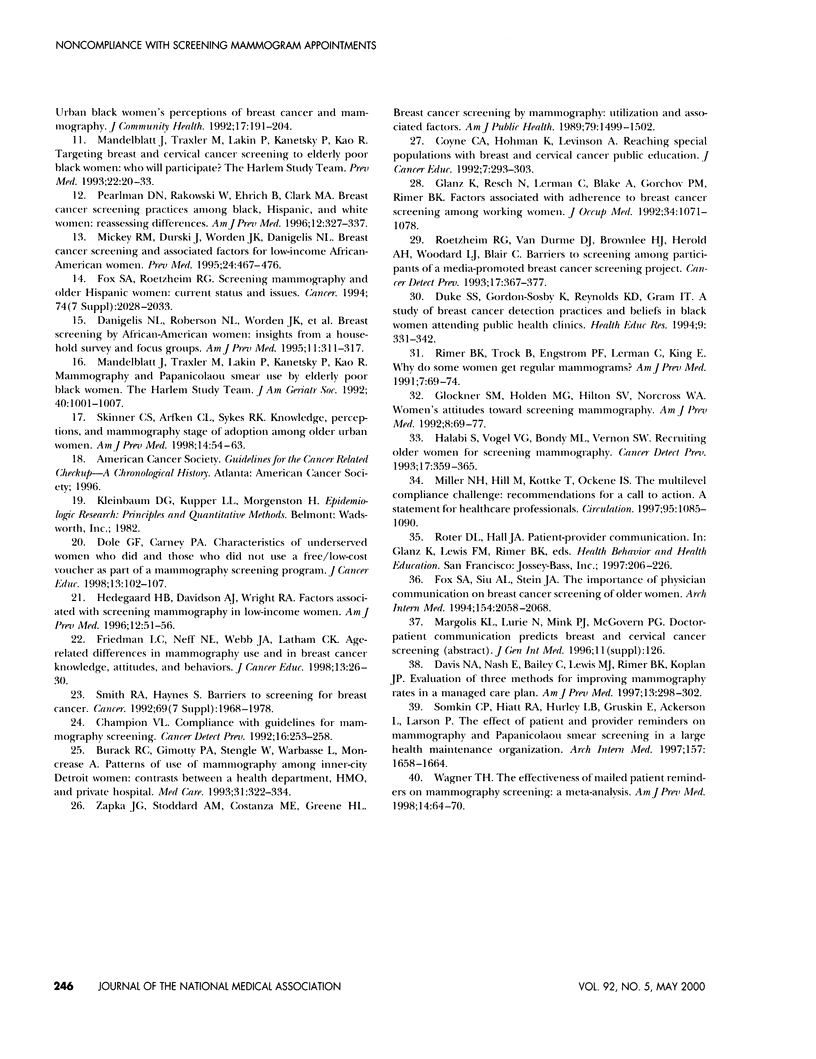
Selected References
These references are in PubMed. This may not be the complete list of references from this article.
- Burack R. C., Gimotty P. A., Stengle W., Warbasse L., Moncrease A. Patterns of use of mammography among inner-city Detroit women: contrasts between a health department, HMO, and private hospital. Med Care. 1993 Apr;31(4):322–334. doi: 10.1097/00005650-199304000-00004. [DOI] [PubMed] [Google Scholar]
- Champion V. L. Compliance with guidelines for mammography screening. Cancer Detect Prev. 1992;16(4):253–258. [PubMed] [Google Scholar]
- Coyne C. A., Hohman K., Levinson A. Reaching special populations with breast and cervical cancer public education. J Cancer Educ. 1992 Winter;7(4):293–303. doi: 10.1080/08858199209528186. [DOI] [PubMed] [Google Scholar]
- Danigelis N. L., Roberson N. L., Worden J. K., Flynn B. S., Dorwaldt A. L., Ashley J. A., Skelly J. M., Mickey R. M. Breast screening by African-American women: insights from a household survey and focus groups. Am J Prev Med. 1995 Sep-Oct;11(5):311–317. [PubMed] [Google Scholar]
- Davis N. A., Nash E., Bailey C., Lewis M. J., Rimer B. K., Koplan J. P. Evaluation of three methods for improving mammography rates in a managed care plan. Am J Prev Med. 1997 Jul-Aug;13(4):298–302. [PubMed] [Google Scholar]
- Dole G. F., Carney P. A. Characteristics of underserved women who did and those who did not use a free/low-cost voucher as part of a mammography screening program. J Cancer Educ. 1998 Summer;13(2):102–107. doi: 10.1080/08858199809528525. [DOI] [PubMed] [Google Scholar]
- Duke S. S., Gordon-Sosby K., Reynolds K. D., Gram I. T. A study of breast cancer detection practices and beliefs in black women attending public health clinics. Health Educ Res. 1994 Sep;9(3):331–342. doi: 10.1093/her/9.3.331. [DOI] [PubMed] [Google Scholar]
- Fox S. A., Siu A. L., Stein J. A. The importance of physician communication on breast cancer screening of older women. Arch Intern Med. 1994 Sep 26;154(18):2058–2068. [PubMed] [Google Scholar]
- Friedman L. C., Neff N. E., Webb J. A., Latham C. K. Age-related differences in mammography use and in breast cancer knowledge, attitudes, and behaviors. J Cancer Educ. 1998 Spring;13(1):26–30. doi: 10.1080/08858199809528507. [DOI] [PubMed] [Google Scholar]
- Glanz K., Resch N., Lerman C., Blake A., Gorchov P. M., Rimer B. K. Factors associated with adherence to breast cancer screening among working women. J Occup Med. 1992 Nov;34(11):1071–1078. doi: 10.1097/00043764-199211000-00008. [DOI] [PubMed] [Google Scholar]
- Glockner S. M., Holden M. G., Hilton S. V., Norcross W. A. Women's attitudes toward screening mammography. Am J Prev Med. 1992 Mar-Apr;8(2):69–77. [PubMed] [Google Scholar]
- Halabi S., Vogel V. G., Bondy M. L., Vernon S. W. Recruiting older women for screening mammography. Cancer Detect Prev. 1993;17(3):359–365. [PubMed] [Google Scholar]
- Hedegaard H. B., Davidson A. J., Wright R. A. Factors associated with screening mammography in low-income women. Am J Prev Med. 1996 Jan-Feb;12(1):51–56. [PubMed] [Google Scholar]
- Mandelblatt J., Traxler M., Lakin P., Kanetsky P., Kao R. Mammography and Papanicolaou smear use by elderly poor black women. The Harlem Study Team. J Am Geriatr Soc. 1992 Oct;40(10):1001–1007. doi: 10.1111/j.1532-5415.1992.tb04476.x. [DOI] [PubMed] [Google Scholar]
- Mandelblatt J., Traxler M., Lakin P., Kanetsky P., Kao R. Targeting breast and cervical cancer screening to elderly poor black women: who will participate? The Harlem Study Team. Prev Med. 1993 Jan;22(1):20–33. doi: 10.1006/pmed.1993.1002. [DOI] [PubMed] [Google Scholar]
- Mickey R. M., Durski J., Worden J. K., Danigelis N. L. Breast cancer screening and associated factors for low-income African-American women. Prev Med. 1995 Sep;24(5):467–476. doi: 10.1006/pmed.1995.1075. [DOI] [PubMed] [Google Scholar]
- Miller N. H., Hill M., Kottke T., Ockene I. S. The multilevel compliance challenge: recommendations for a call to action. A statement for healthcare professionals. Circulation. 1997 Feb 18;95(4):1085–1090. doi: 10.1161/01.cir.95.4.1085. [DOI] [PubMed] [Google Scholar]
- Pearlman D. N., Rakowski W., Ehrich B., Clark M. A. Breast cancer screening practices among black, Hispanic, and white women: reassessing differences. Am J Prev Med. 1996 Sep-Oct;12(5):327–337. [PubMed] [Google Scholar]
- Rimer B. K., Trock B., Engstrom P. F., Lerman C., King E. Why do some women get regular mammograms? Am J Prev Med. 1991 Mar-Apr;7(2):69–74. [PubMed] [Google Scholar]
- Roetzheim R. G., Van Durme D. J., Brownlee H. J., Herold A. H., Woodard L. J., Blair C. Barriers to screening among participants of a media-promoted breast cancer screening project. Cancer Detect Prev. 1993;17(3):367–377. [PubMed] [Google Scholar]
- Skinner C. S., Arfken C. L., Sykes R. K. Knowledge, perceptions, and mammography stage of adoption among older urban women. Am J Prev Med. 1998 Jan;14(1):54–63. doi: 10.1016/s0749-3797(97)00008-1. [DOI] [PubMed] [Google Scholar]
- Smith R. A., Haynes S. Barriers to screening for breast cancer. Cancer. 1992 Apr 1;69(7 Suppl):1968–1978. doi: 10.1002/1097-0142(19920401)69:7+<1968::aid-cncr2820691718>3.0.co;2-j. [DOI] [PubMed] [Google Scholar]
- Somkin C. P., Hiatt R. A., Hurley L. B., Gruskin E., Ackerson L., Larson P. The effect of patient and provider reminders on mammography and Papanicolaou smear screening in a large health maintenance organization. Arch Intern Med. 1997 Aug 11;157(15):1658–1664. [PubMed] [Google Scholar]
- Zapka J. G., Stoddard A. M., Costanza M. E., Greene H. L. Breast cancer screening by mammography: utilization and associated factors. Am J Public Health. 1989 Nov;79(11):1499–1502. doi: 10.2105/ajph.79.11.1499. [DOI] [PMC free article] [PubMed] [Google Scholar]


